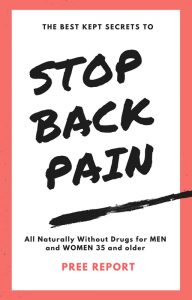What is it:
Also called “wear and tear” arthritis or degenerative joint disease, osteoarthritis (OA) is the progressive breakdown of the joints’ natural shock absorbers.
Important Facts:
The symptoms of osteoarthritis tend to develop slowly. You may notice pain or soreness when you move certain joints or when you’ve been inactive for a prolonged period. The affected joints may also be stiff or creaky. Typically, osteoarthritis leads to morning stiffness that resolves in 30 minutes. When osteoarthritis affects the hands, some people develop bony enlargements in the fingers, which may or may not cause pain.
Statistics:
More than 40 million people in the United States have the disease. By 2030, an estimated 20 percent of Americans — about 70 million people — will have passed their 65th birthday and will be at risk of developing osteoarthritis.
Treatment Duration:
There is no treatment to stop the erosion of cartilage in the joints, but there are ways to improve joint function. One of these is physical therapy to increase flexibility and strengthen the muscles around the affected joints. The therapist may also apply hot or cold therapies such as compresses to relieve pain.
Do’s & Don’ts:

Credit Paul Glendell Natural England
When osteoarthritis flares up, many patients find relief with over-the-counter pain and anti-inflammatory medication, such as aspirin, ibuprofen, or acetaminophen. Pain-relieving creams or sprays can also help when applied directly to the sore area. If pain persists despite the use of pills or creams, your doctor may suggest an injection of steroids or hyaluronans directly into the joint.
If you’re overweight, one of the most effective ways to relieve pain in the knee or hip joints is to shed a few pounds. Even modest weight loss has been shown to reduce symptoms of osteoarthritis by easing the strain on weight-bearing joints. Losing weight not only cuts down on pain, but may also reduce long-term joint damage. Keep joints healthy by keeping them moving. The more you move, the less stiffness you’ll have. Whether you’re reading, working, or watching TV, change positions often. Take breaks from your desk or your chair and move around.
Common Myths:
Many arthritis experts believe that stretching is the most important type of exercise. Try to stretch daily but at least three times a week. However, it’s important that you don’t stretch cold muscles. Do a light warm up before stretching to loosen up the joints and the ligaments, and tendons around them.
Jesse Elliott, DPT, Licensed Doctor of Physical Therapy with Siskiyou PT
We offer Same Day Appointments for those that are post surgical or medically urgent. We offer discounts or payment plans for those that have high insurance deductible health plans, no insurance or have a financial hardship.
Call now to get your life back, 800-958-2588 or visit SiskiyouPT.com
If you like this post or have a question. Comment below.



